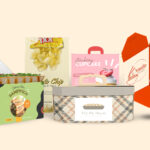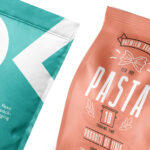The art of designing textured paper brochures has become an essential tool for marketing professionals. As the digital age progresses, the tangibility of a brochure provides a unique way to engage customers. In the initial stages of design, choosing the appropriate paper texture can enhance the touch and feel, making it memorable. Textured paper brochures can provide a competitive edge by fostering a connection with the audience that digital formats might lack.

The Importance of Textured Paper in Brochure Design
Bespoke brochure design starts with choosing the right paper. The texture not only impacts the visual aesthetics but also how the brochure is perceived when held. This tactile component makes the experience personal and engaging. Textured paper brochures can invoke emotions, whether it’s luxury, simplicity, or creativity.
Why Choose Textured Paper?
Choosing textured paper over smooth paper for your brochures can be advantageous. Here are a few reasons:
- Enhances Visual Appeal: Textured paper can bring a brochure to life, making it more visually appealing than standard smooth paper.
- Unique Tactile Experience: The feel of the brochure can leave a lasting impression on the recipient.
- Brand Differentiation: Using textured paper can set your brand apart from competitors by adding an element of sophistication.
For more on the types of brochures, check out this [informative article](https://www.printivity.com/insights/2020/03/19/what-is-a-brochure/) rel=’nofollow’>here
Types of Textured Paper for Brochures
Various textures can be used in brochure printing, and each can convey a different message or feel. Some popular options include:
Linen
Linen texture offers a subtle elegance and is perfect for high-end product brochures. It provides both a visual and tactile sophistication.
Laid
This texture has visible horizontal and vertical lines that give a handmade paper appearance. It’s suitable for brands that want to emphasize artisanal values.
Felt
Felt paper has a soft, woven feel, ideal for artistic and creative ventures, enhancing the aesthetic appeal of the brochures.
Cotton
Known for its high-quality feel, cotton is durable and can withstand various handling, making it suitable for brochures meant for repeated use.
Design Tips for Textured Paper Brochures
Designing a brochure isn’t just about the message but also about how it’s communicated visually and physically. Here are some tips:
Bold Typography
With textured paper, bold typography can create striking contrasts and focal points that guide the reader’s eye.
Minimalist Aesthetics
Pairing textured paper with a minimalist design can highlight the paper’s features while keeping the focus on key information.
Effective Use of Colors
Colors can look different on textured paper. Testing out various ink options can ensure that your design remains vibrant and appealing.
Embossing and Foil
Enhance the look of your brochures with elements like embossing and gold or silver foil to add an extra layer of luxury.
Costs and Benefits of Using Textured Paper
Although textured paper might carry a higher cost compared to smooth alternatives, the benefits often outweigh the expenses. The quality it brings to the table can catch the eye of potential clients and make the investment worthwhile.
For those interested in cost-effective printing solutions, our [small quantity brochure printing](https://newprintingera.com/small-quantity-brochure-printing/) services ensure that even small campaigns can leverage high-quality textures without breaking the bank.
Environmental Impact of Textured Paper Brochures
Sustainable choices are becoming more important in print marketing. Many textured papers are made from recycled materials or sourced responsibly, allowing businesses to stay eco-friendly.
Recycled Paper
Many textured papers are now available in recycled versions, reducing the environmental impact and appealing to eco-conscious consumers.
Sustainable Sourcing
Choosing papers from sustainable sources helps companies maintain their environmental responsibility and enhances brand reputation.
How Textured Paper Affects Brochure Presentation
The tactile quality of textured paper brochures adds an element of class and presence when presenting your materials to prospective clients or customers. It can give your presentations a polished and professional edge.
Presentation Impact
By using textured paper, the physical feel enhances the presentation impact, which can be crucial in settings like product launches or exhibitions.
Discover effective ways to use brochures in [product launches](https://newprintingera.com/brochures-for-product-launches/) for enhanced impact.
Textured Paper in Digital Printing
With advancements in technology, digital printing has become more accessible with textured papers. Printers can handle different paper weights and textures more effectively than before.
Futuristic Trends in Brochure Designing
The world of brochure designing continuously evolves. Modern trends show an increased interest in personalized and environmentally friendly approaches. Adopting these trends can be a step towards future-proofing your marketing strategies.
Conclusion
Whether it’s creating a memorable tactile experience or standing out in a sea of digital marketing efforts, textured paper brochures can offer a distinctive advantage. Considering elements like texture, design, and environmental impact can significantly enhance the effectiveness of your print marketing endeavors.

FAQs
What is the most popular texture for brochures?
Linen and felt textures are among the most popular due to their aesthetic appeal and tactile experience.
Can textured paper be used in digital printing?
Yes, modern digital printers can effectively handle various textures, making it a viable option for customized designs.
Is textured paper environmentally friendly?
Many textured paper options are sourced sustainably or made from recycled materials, making them a good choice for eco-friendly practices.
This article contains affiliate links. We may earn a commission at no extra cost to you.






